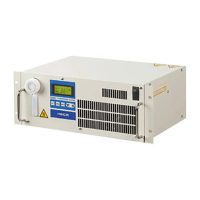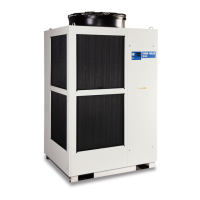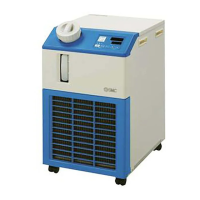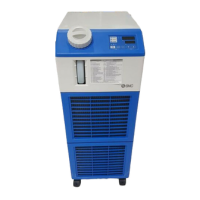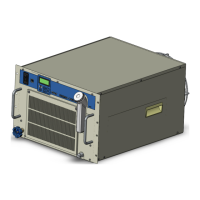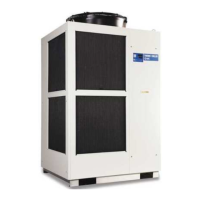1. Avoid strong vibration and/or impact.
The product is precision equipment. Do not apply vibration or
impact during transportation.
2. Caution when moving a heavy object.
This product is heavy. Use adequate caution to avoid injury
when picking up and setting down the product, and dropping
accidents should be avoided.
3. Installation
When installing the product into a rack, it should be designed that the product
weight is held with the bottom surface of the product. Use the handles on the
front side of the product when installing/removing the product to/from the rack.
Transportation / Movement / Installation
Caution
Radiation Air
Caution
1.
The inlet for radiation air must not be exposed
to particles and dust as far as possible.
2. Do not let the inlet and outlet for radiation air
get closed.
3. If more than one thermo-con is used, consid-
er their arrangement so that the downstream
sides of the thermo-cons suck radiation air
from the upstream sides.
Otherwise, the performance at the downstream sides may dete-
riorate. Also, the set temperature may not be achieved depend-
ing on the value of the set temperature and the load. In such a
case, take countermeasures such as changing the direction of
the thermo-cons to prevent the deterioration of performance.
4.
Filters are not built-in. Mount them as necessary.
5.
The table below summarises the flow rate of the ra-
diation air and heat generation (maximum values).
Model Air fl ow [l/min] Heat generation [W]
HECR002
2000 600
HECR004
5000 1300
HECR006
5000 1400
HECR008
7000 1700
HECR010
7000 2500
1. Use a fluid that is listed in the specifications.
2. Deionised water (with an electrical conductiv-
ity of approximately 1 μS/cm) can be used,
but may lose its electrical conductivity.
Also, if a facility supplying deionised water is used, the thermo-
con may be damaged by static electricity.
3. If deionised water is used, bacteria and algae
may grow in a short period.
If the thermo-con is operated with bacteria and algae, its cool-
ing capacity or the capacity of the pump may deteriorate.
Exchange all deionised water regularly depending on the condi-
tions (once a month as a guide).
4.
If using a fluid other than those listed in the
specifications, please contact SMC beforehand.
5. The maximum operating pressure of resin
tank is 0.1 MPa.
If this pressure is exceeded, leakage from the tank in the ther-
mo-con can result.
6.
Select a pipe with a length and diameter which allow a
flow rate of 0.5 l/min or more (HECR002) or 1 l/min or
more (HECR004/006/008/010) for the circulating fluid.
If the flow rate is less than 0.5 l/min, the thermo-con cannot pro-
vide precise control, but also can fail because of the repeated
cooling and heating operation.
7. A magnet driven pump is used as a circulat-
ing pump.
A fluid which contains metal powders such as iron powder cannot be used.
Circulating Fluid
Caution
System Design
Warning
1. This catalogue shows the specifications of
the thermo-con.
1. Check the detailed specifications in the separate “Product
Spe cifications”, and evaluate the compatibility of the thermo-
con with user’s system.
2. Although the protection circuit as a single unit is installed, the
user is requested to carry out the safety design for the whole
system.
Series HECR
Specific Product Precautions 1
Be sure to read this before handling. Refer to the back cover for Safety Instructions. For
Temperature Control Equipment Precautions, refer to “Handling Precautions for SMC
Products” and the Operation Manual on the SMC website, http://www.smc.eu
Handling
Warning
1. Thoroughly read the Operation Manual.
Read the Operation Manual completely before operation, and
keep this manual available whenever necessary.
2. If the set temperature is repeatedly changed
by 10 °C or more, the thermo-con may fail in
short periods of time.
Operating Environment / Storage Environment
Warning
1. Keep within the specified ambient tempera-
ture and humidity range.
Also, if the set temperature is too low, condensation may form
on the inside of the thermo-con or the surface of piping even
within the specified ambient temperature range. Dew conden-
sation can cause failure, and so must be avoided by consider-
ing operating conditions.
2. The thermo-con is not designed for clean
room usage.
The pump and fan generate dust.
3. Low molecular siloxane can damage the con-
tact of the relay.
Use the thermo-con in a place free from low molecular siloxane.
21
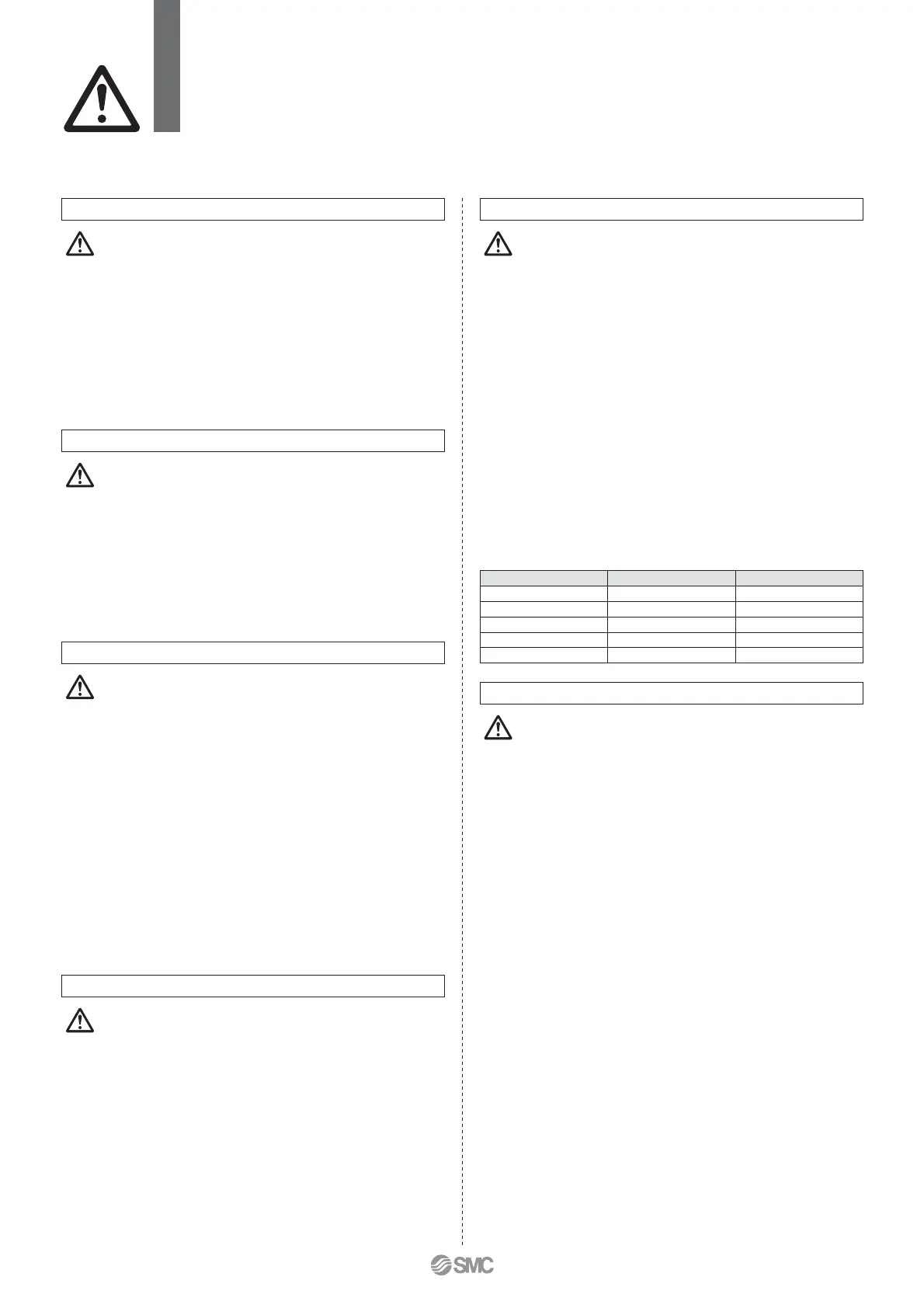